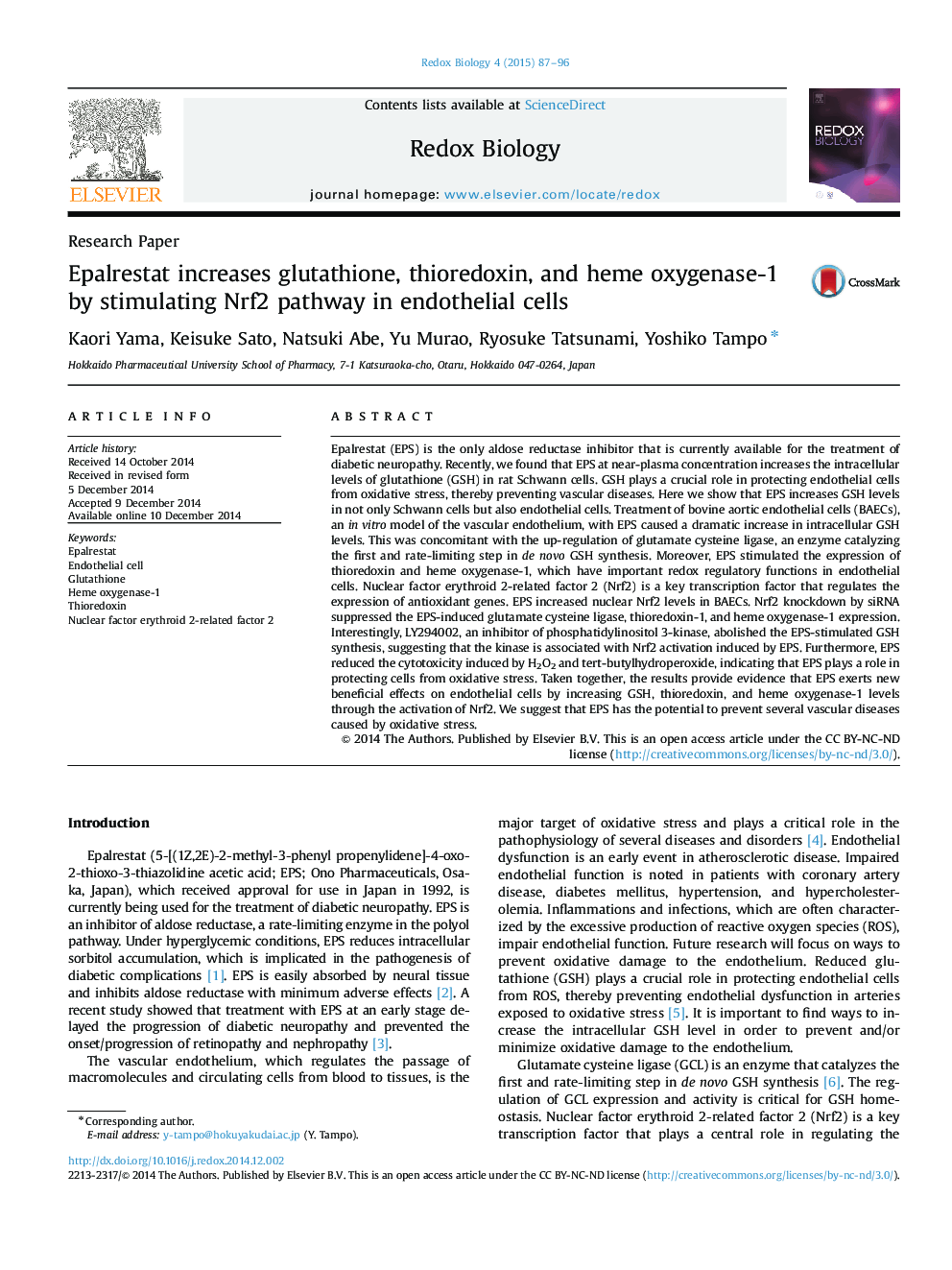| کد مقاله | کد نشریه | سال انتشار | مقاله انگلیسی | نسخه تمام متن |
|---|---|---|---|---|
| 1923085 | 1535846 | 2015 | 10 صفحه PDF | دانلود رایگان |

• Epalrestat increases GSH levels in endothelial cells through transcription regulation.
• Epalrestat increases Trx and HO-1 levels.
• Nrf2 activation by epalrestat is involved in increases in GSH, Trx, and HO-1 levels.
• Epalrestat enhances endothelial cell resistance to oxidative stress.
Epalrestat (EPS) is the only aldose reductase inhibitor that is currently available for the treatment of diabetic neuropathy. Recently, we found that EPS at near-plasma concentration increases the intracellular levels of glutathione (GSH) in rat Schwann cells. GSH plays a crucial role in protecting endothelial cells from oxidative stress, thereby preventing vascular diseases. Here we show that EPS increases GSH levels in not only Schwann cells but also endothelial cells. Treatment of bovine aortic endothelial cells (BAECs), an in vitro model of the vascular endothelium, with EPS caused a dramatic increase in intracellular GSH levels. This was concomitant with the up-regulation of glutamate cysteine ligase, an enzyme catalyzing the first and rate-limiting step in de novo GSH synthesis. Moreover, EPS stimulated the expression of thioredoxin and heme oxygenase-1, which have important redox regulatory functions in endothelial cells. Nuclear factor erythroid 2-related factor 2 (Nrf2) is a key transcription factor that regulates the expression of antioxidant genes. EPS increased nuclear Nrf2 levels in BAECs. Nrf2 knockdown by siRNA suppressed the EPS-induced glutamate cysteine ligase, thioredoxin-1, and heme oxygenase-1 expression. Interestingly, LY294002, an inhibitor of phosphatidylinositol 3-kinase, abolished the EPS-stimulated GSH synthesis, suggesting that the kinase is associated with Nrf2 activation induced by EPS. Furthermore, EPS reduced the cytotoxicity induced by H2O2 and tert-butylhydroperoxide, indicating that EPS plays a role in protecting cells from oxidative stress. Taken together, the results provide evidence that EPS exerts new beneficial effects on endothelial cells by increasing GSH, thioredoxin, and heme oxygenase-1 levels through the activation of Nrf2. We suggest that EPS has the potential to prevent several vascular diseases caused by oxidative stress.
Figure optionsDownload as PowerPoint slide
Journal: Redox Biology - Volume 4, April 2015, Pages 87–96